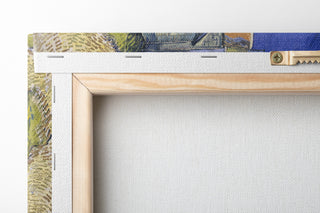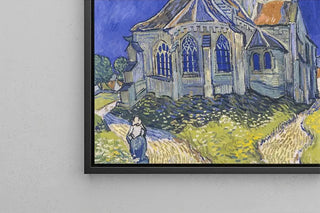Achilles discovered by Ulysses and Diomedes - Peter Paul Rubens

Achilles unveiled: Peter Paul Rubens' heroic impulse
In this vibrant scene, Achilles discovered by Ulysses and Diomedes reveals Rubens' characteristic dramatic power, where bodies intertwine in a striking movement. The rich palette blends warm ochres, deep reds, and luminous flesh tones, highlighting the tension between cunning and revelation, while the energetic brushwork emphasizes muscles and folds of fabric. The balance between chiaroscuro and vivid colors creates an atmosphere that is both theatrical and intimate, where every gaze and gesture tells the story of the hero's discovery. This composition invites the viewer to follow the narrative and the expressive force of the painter.
Peter Paul Rubens, master of Flemish Baroque
Peter Paul Rubens, a major figure of the 17th century, embodies Flemish Baroque through a synthesis of movement, sensuality, and classical erudition. Influenced by Anton van Dyck, Titian, and Michelangelo, he developed a pictorial language based on the dynamism of bodies and chromatic richness, creating commissions for royal courts and churches across Europe. Among his major works are mythological and religious cycles that redefined the depiction of heroic gestures and collective emotion. His spectacular and narrative style makes each piece a manifesto of visual power and technical virtuosity.
An exceptional art print to elevate your interior
Choosing an art print of Achilles discovered by Ulysses and Diomedes is like inviting a historic masterpiece into your living space: your living room, office, or library is instantly enriched. This faithfully reproduced canvas respects the chromatic values and brushstroke details, ensuring a high fidelity to the original modeling and contrast. The painting Achilles discovered by Ulysses and Diomedes fits seamlessly into both classic and contemporary decor, adding depth and storytelling. Opting for this art print means investing in a decorative piece that combines quality, artistic erudition, and lasting visual presence.

Achilles unveiled: Peter Paul Rubens' heroic impulse
In this vibrant scene, Achilles discovered by Ulysses and Diomedes reveals Rubens' characteristic dramatic power, where bodies intertwine in a striking movement. The rich palette blends warm ochres, deep reds, and luminous flesh tones, highlighting the tension between cunning and revelation, while the energetic brushwork emphasizes muscles and folds of fabric. The balance between chiaroscuro and vivid colors creates an atmosphere that is both theatrical and intimate, where every gaze and gesture tells the story of the hero's discovery. This composition invites the viewer to follow the narrative and the expressive force of the painter.
Peter Paul Rubens, master of Flemish Baroque
Peter Paul Rubens, a major figure of the 17th century, embodies Flemish Baroque through a synthesis of movement, sensuality, and classical erudition. Influenced by Anton van Dyck, Titian, and Michelangelo, he developed a pictorial language based on the dynamism of bodies and chromatic richness, creating commissions for royal courts and churches across Europe. Among his major works are mythological and religious cycles that redefined the depiction of heroic gestures and collective emotion. His spectacular and narrative style makes each piece a manifesto of visual power and technical virtuosity.
An exceptional art print to elevate your interior
Choosing an art print of Achilles discovered by Ulysses and Diomedes is like inviting a historic masterpiece into your living space: your living room, office, or library is instantly enriched. This faithfully reproduced canvas respects the chromatic values and brushstroke details, ensuring a high fidelity to the original modeling and contrast. The painting Achilles discovered by Ulysses and Diomedes fits seamlessly into both classic and contemporary decor, adding depth and storytelling. Opting for this art print means investing in a decorative piece that combines quality, artistic erudition, and lasting visual presence.





